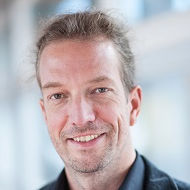Progress in Thermal Process Engineering
A special issue of ChemEngineering (ISSN 2305-7084).
Deadline for manuscript submissions: closed (25 October 2019) | Viewed by 41587
Special Issue Editor
Interests: process intensification; (multiple) dividing wall columns; additive manufacturing; process simulation; process optimization; process thermodynamics
Special Issues, Collections and Topics in MDPI journals
Special Issue Information
Dear Colleagues,
Thermal process engineering is a mature discipline and thermal separations, like distillation or extraction, have been applied for thousands of years. However, thermal separation processes are most widespread in the chemical industry and account, to a large extent, for the energy demand of chemical production. In the past few years, the chemical industry has been struggling with stricter regulations, increased global competition, higher market volatilities and changing supply chains. To react to these burdens and maintain competitiveness, it is therefore mandatory for the chemical industry to develop more flexible and efficient processes. The fast evolution in the field of intensified processes, for instance, reactive distillation or the dividing wall column, reflects this trend very well. In recent years, the focus has moved towards the flexibility of equipment and entire production plants. The idea is to reduce CAPEX by utilization of standardized equipment that can be applied in a wide operation window. Flexible container-based or skid-mounted production units are also discussed in this context. These plants can easily be adapted to changing production volumes by a simple numbering-up, which reduces the risk of large investments in a volatile market.
The mentioned concepts also make new methods for modelling and simulation necessary. Significant progress has been made, for instance, in the field of CFD-simulations or mathematical optimization of mixed integer non-linear problems in the past few years.
Even though thermal process engineering is old, it still holds plenty of opportunities for improvements, optimization and new concepts. This Special Issue aims to reflect these efforts.
Prof. Dr.-Ing. Thomas Grützner
Guest Editor
Manuscript Submission Information
Manuscripts should be submitted online at www.mdpi.com by registering and logging in to this website. Once you are registered, click here to go to the submission form. Manuscripts can be submitted until the deadline. All submissions that pass pre-check are peer-reviewed. Accepted papers will be published continuously in the journal (as soon as accepted) and will be listed together on the special issue website. Research articles, review articles as well as short communications are invited. For planned papers, a title and short abstract (about 100 words) can be sent to the Editorial Office for announcement on this website.
Submitted manuscripts should not have been published previously, nor be under consideration for publication elsewhere (except conference proceedings papers). All manuscripts are thoroughly refereed through a single-blind peer-review process. A guide for authors and other relevant information for submission of manuscripts is available on the Instructions for Authors page. ChemEngineering is an international peer-reviewed open access semimonthly journal published by MDPI.
Please visit the Instructions for Authors page before submitting a manuscript. The Article Processing Charge (APC) for publication in this open access journal is 1600 CHF (Swiss Francs). Submitted papers should be well formatted and use good English. Authors may use MDPI's English editing service prior to publication or during author revisions.
Keywords
- Process Intensification
- process integration
- energy efficiency
- resource efficiency
- modelling
- simulation
- flexible and modular production concepts
- heat integration
- optimization





